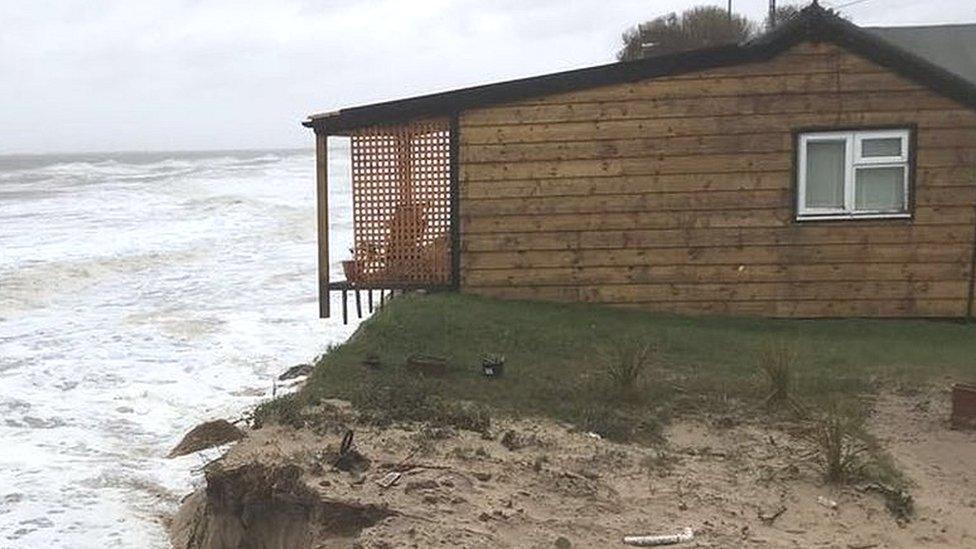Holderness coast: Major cliff landslides 'every six years'
- Published
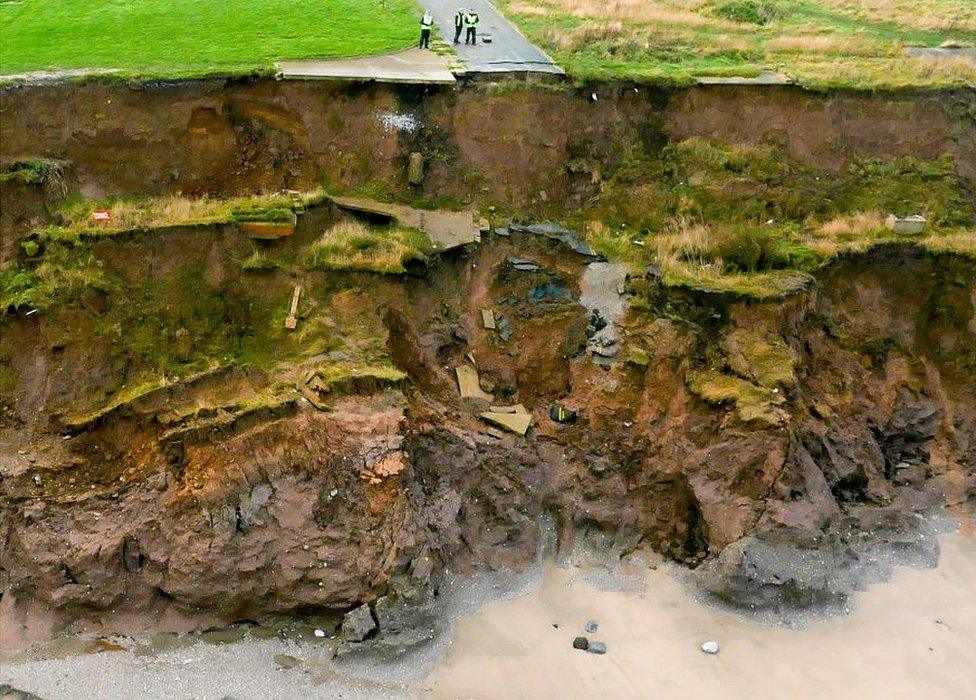
The British Geological Survey created a "coastline landslide observatory" in the village of Aldbrough to monitor the cliff
Major landslides occur on the cliffs of East Yorkshire - some of the fastest eroding in Europe - every six to seven years, a study has concluded.
Geologists found some 100m (330ft) stretches of the Holderness coast were losing enough cliff to fill two-and-a-half Olympic swimming pools a year.
The 18-year study was carried out by the British Geological Survey (BGS).
Researchers said it could help to forecast how landslides would respond to climate change predictions.
A team created the BGS's first "coastline landslide observatory" in Aldbrough in 2001, with laser scans, GPS and drone photography later used to generate 3D models of the cliffs.
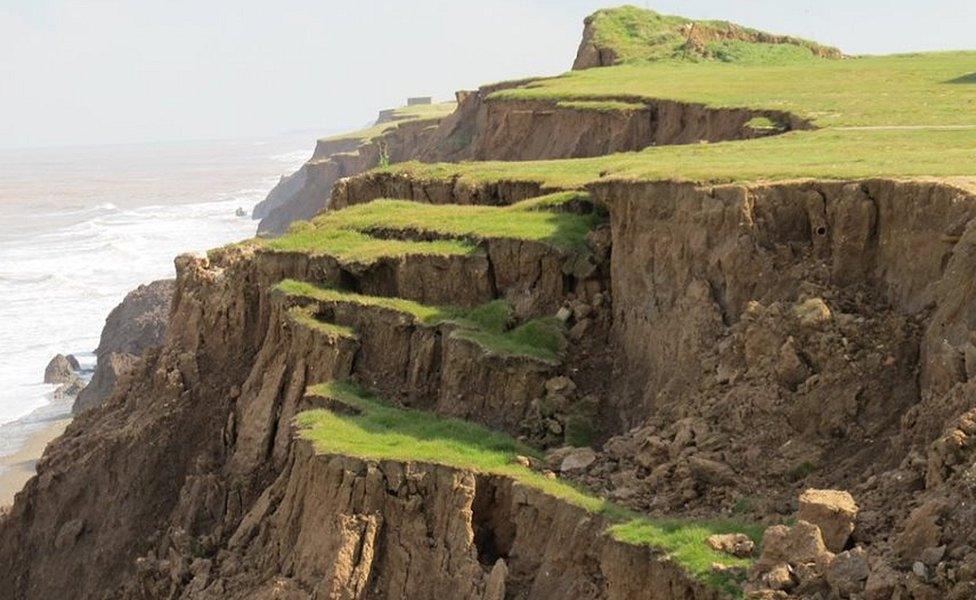
The 50 km-long Holderness coast is one of the fastest eroding coastlines in Europe
Six 20m (66ft) boreholes were drilled at differing distances away from the cliff to monitor groundwater pressure and physical movements, with weather data also collected offshore.
The team found major landslides came in cycles, with large events mostly driven by groundwater levels.
Storm frequency and wave energy were also contributing factors.
The BGS said previous research measuring coastal retreat used aerial photograph comparisons or monitored cliff changes with a tape measure, but they lacked the precision of this study.
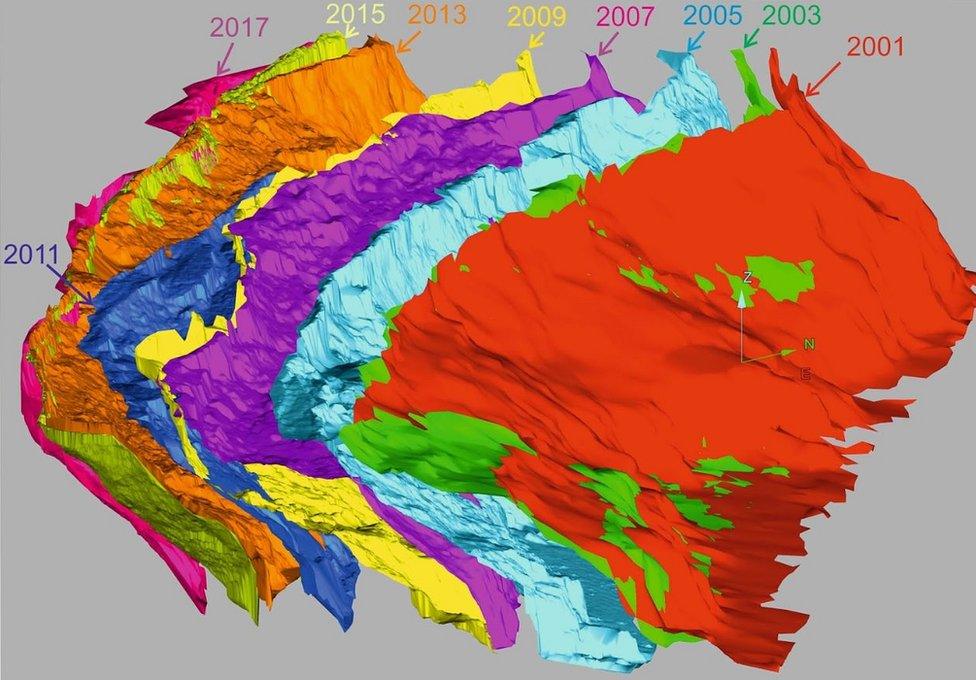
The team created a 3D model of the cliff to show how it has retreated since 2001
BGS engineering geologist Cath Pennington said: "These methods produce an estimate but can only ever be linear, for example 1.5m per year.
"We do not know if the 1.5m happened little by little or suddenly all at once."
The amount of cliff lost to the sea the team measured ranged from 1,200 to 6,300 cubic metres per 100m section of cliff per year.

Houses along the East Yorkshire coast, including some properties in Tunstall, are facing demolition due to coastal erosion
Peter Hobbs, who is also part of the BGS's landslides team, said: "This research will help improve resilience and forecast future erosion.
"We hope that this work will contribute not only to our understanding of landslide processes but will also inform policies to help manage the coastal changes we will see in the future."
The full findings were published in the Quarterly Journal of Engineering Geology and Hydrogeology, external.

Follow BBC Yorkshire on Facebook, external, Twitter, external and Instagram, external. Send your story ideas to yorkslincs.news@bbc.co.uk, external
- Published23 April 2019
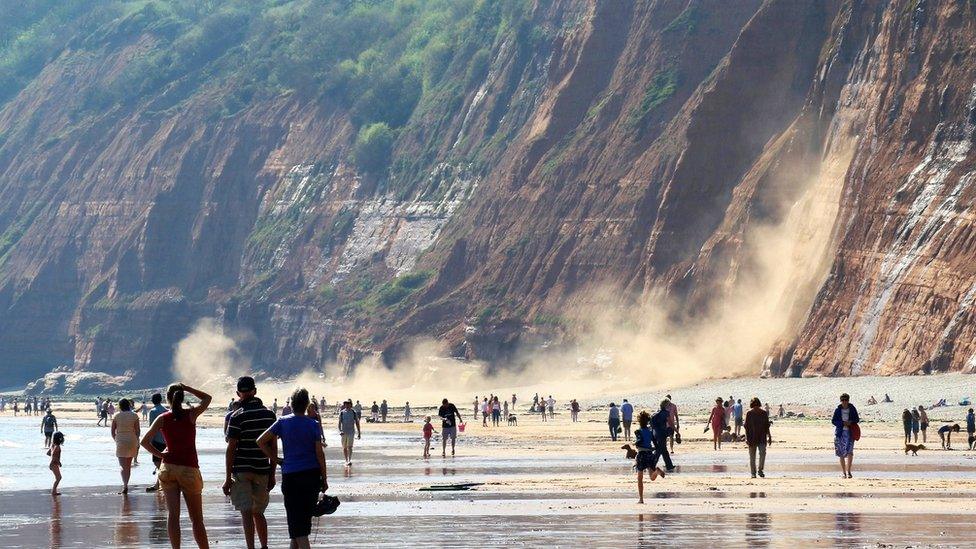
- Published30 March 2019

- Published24 March 2019
